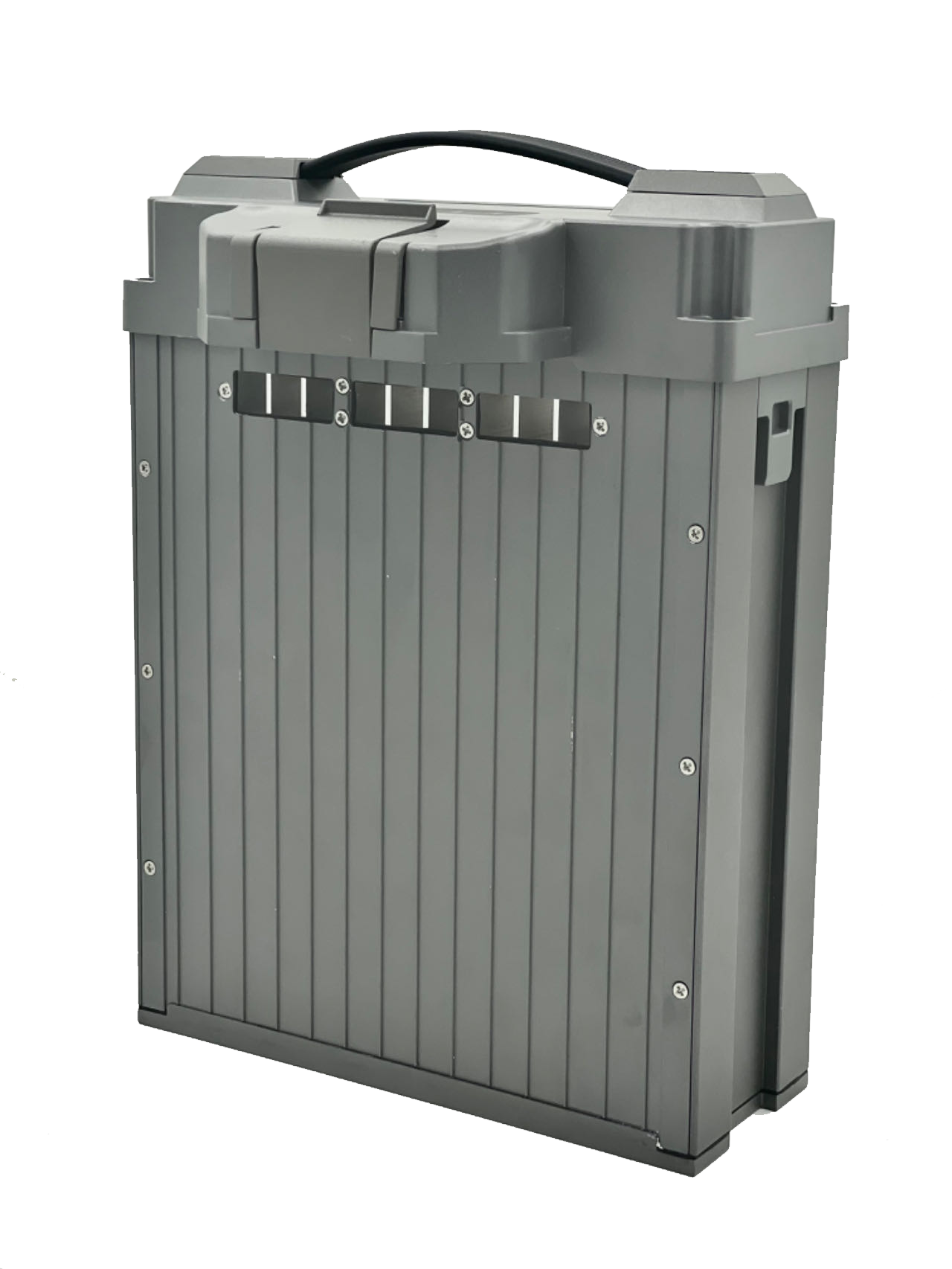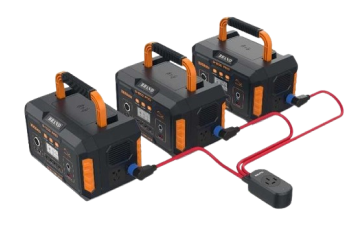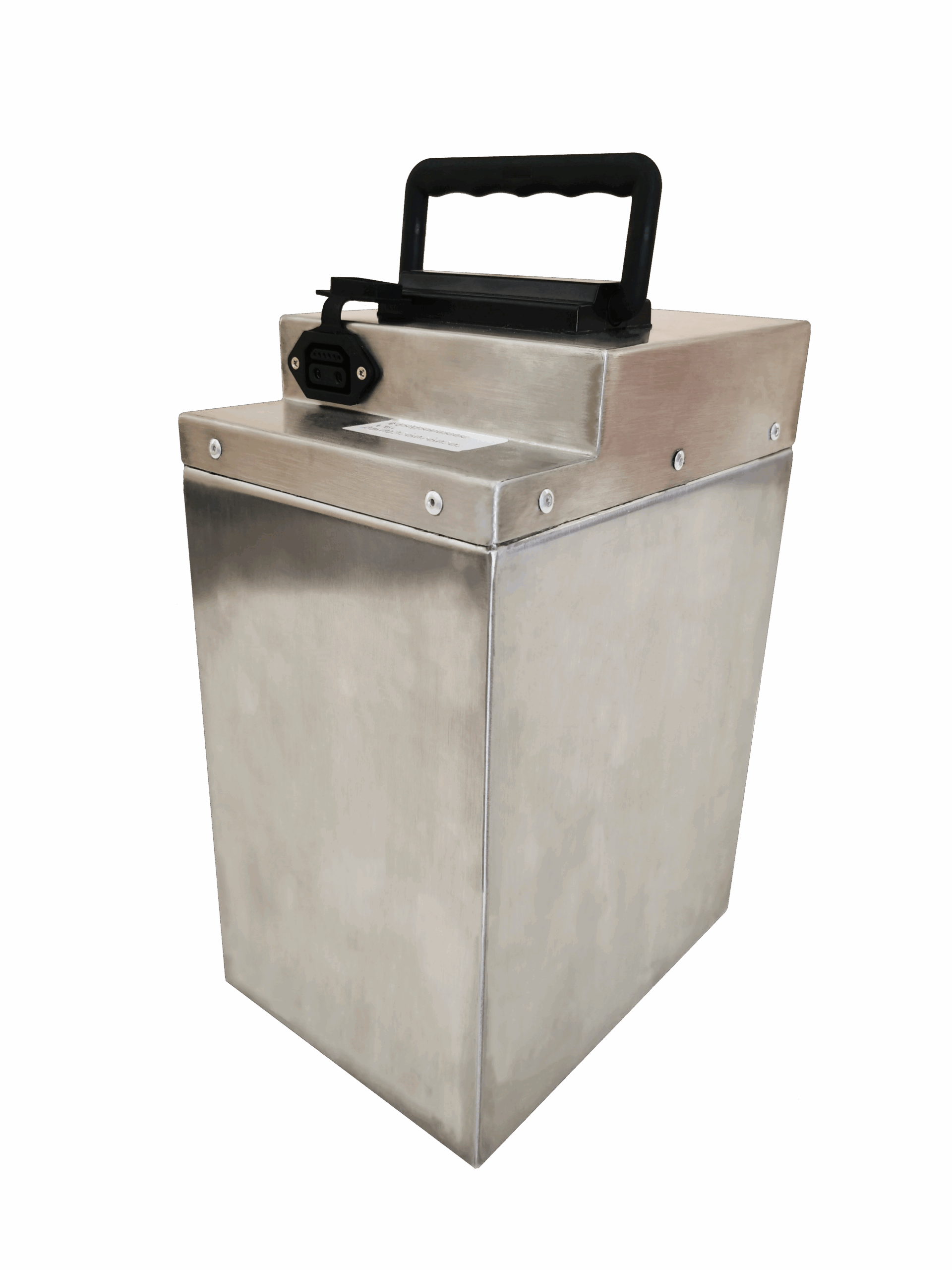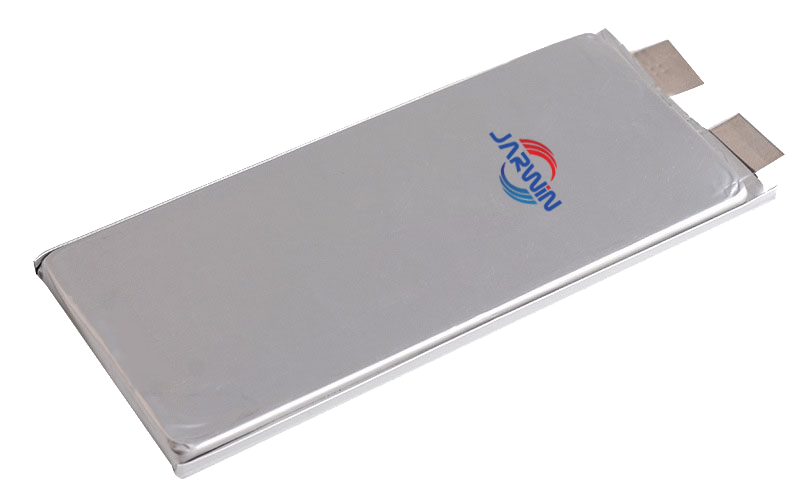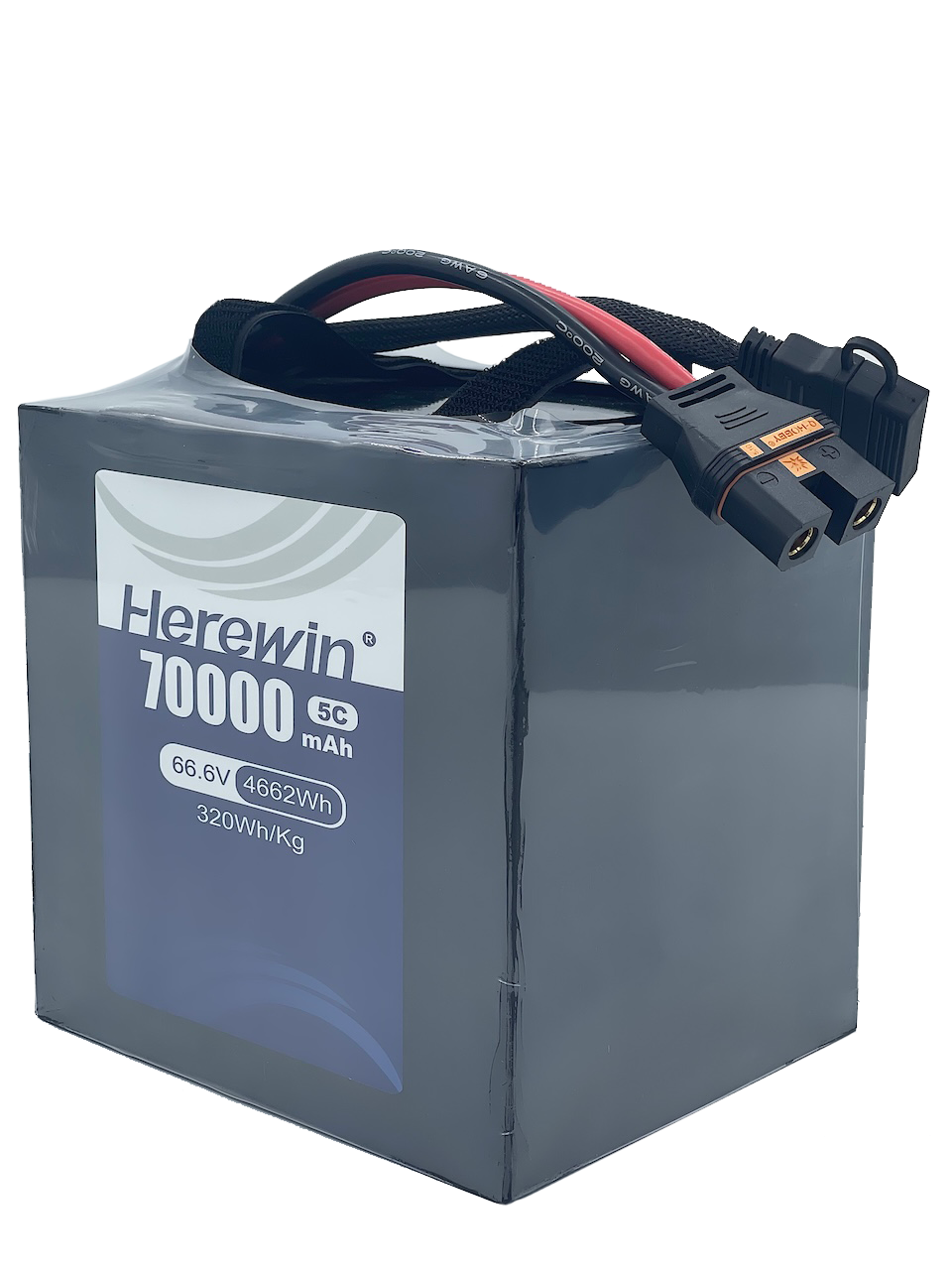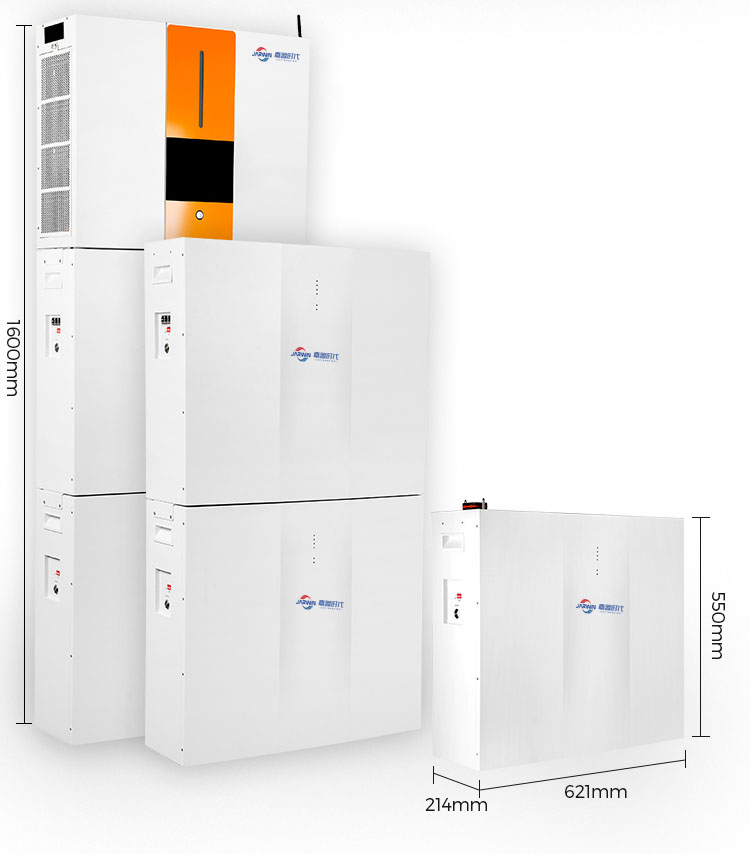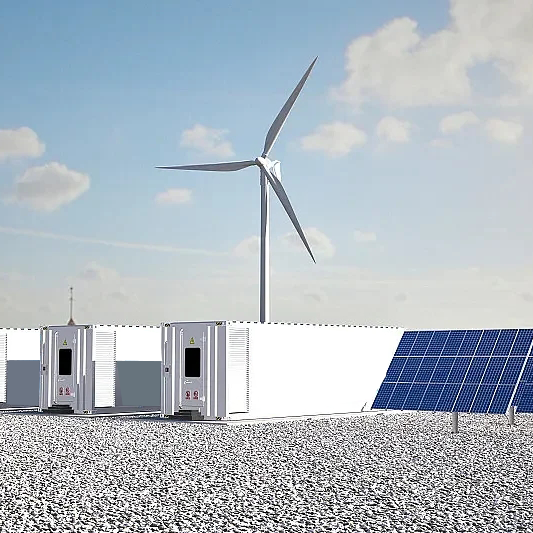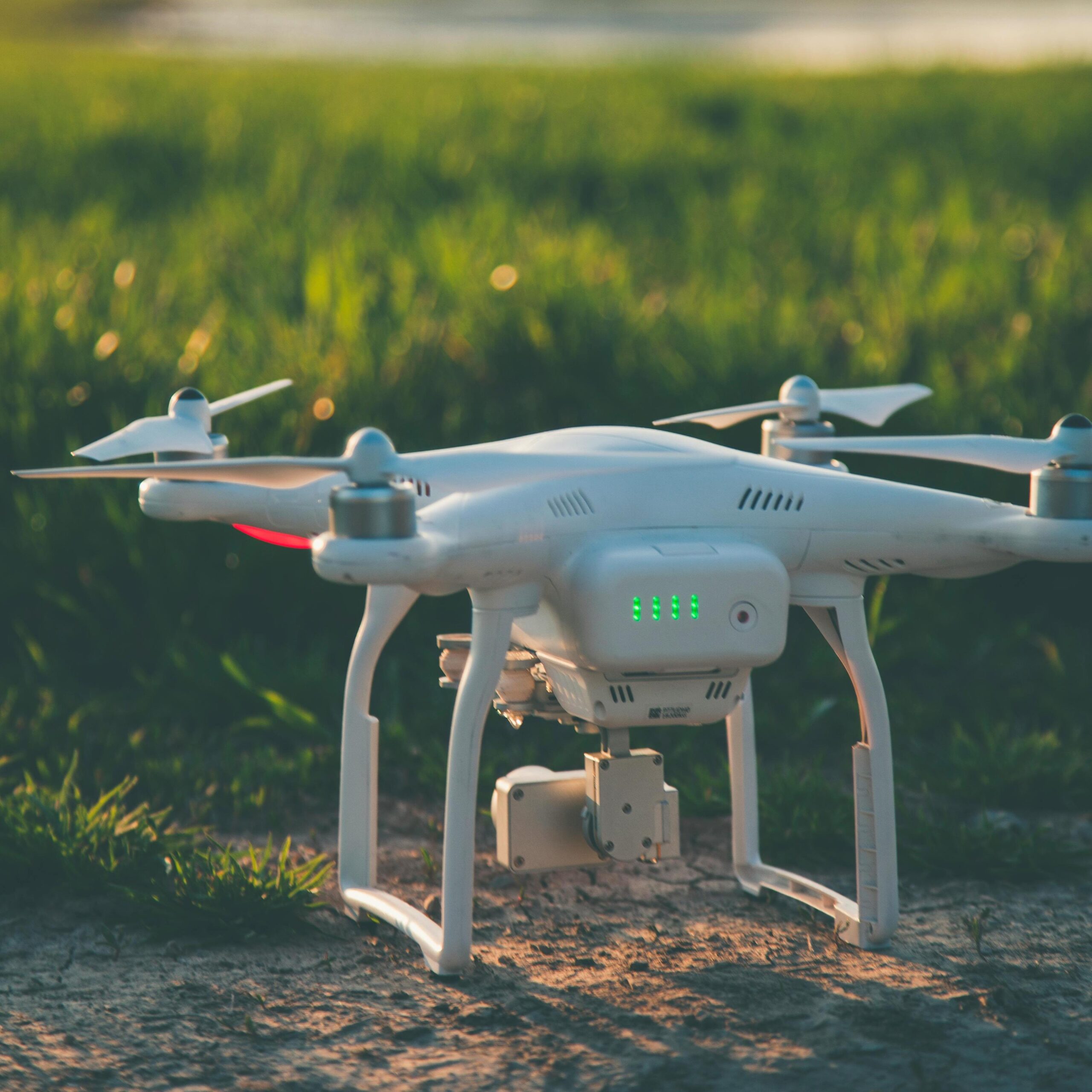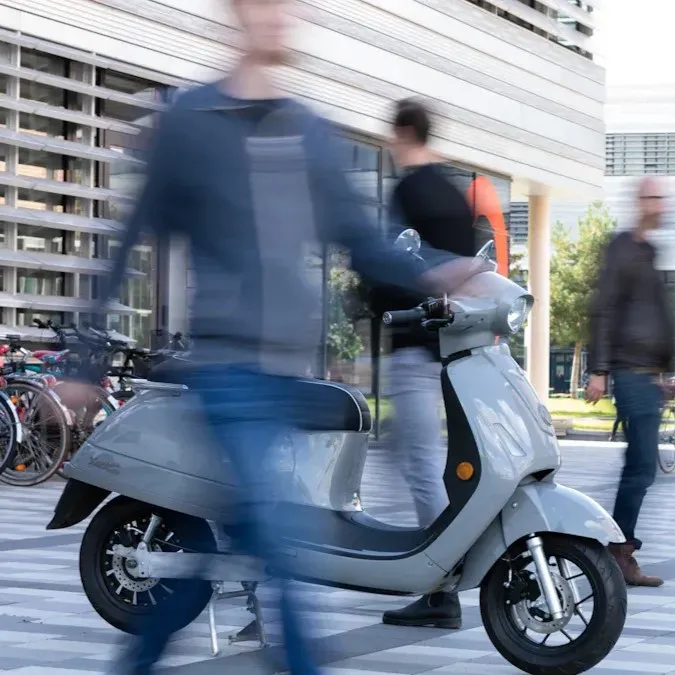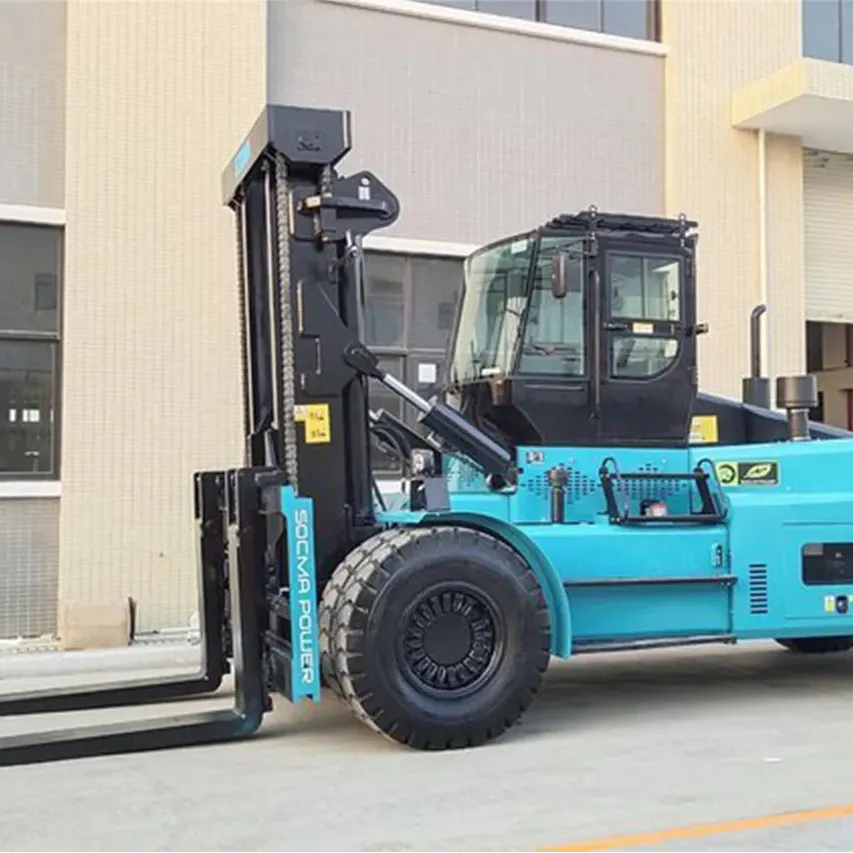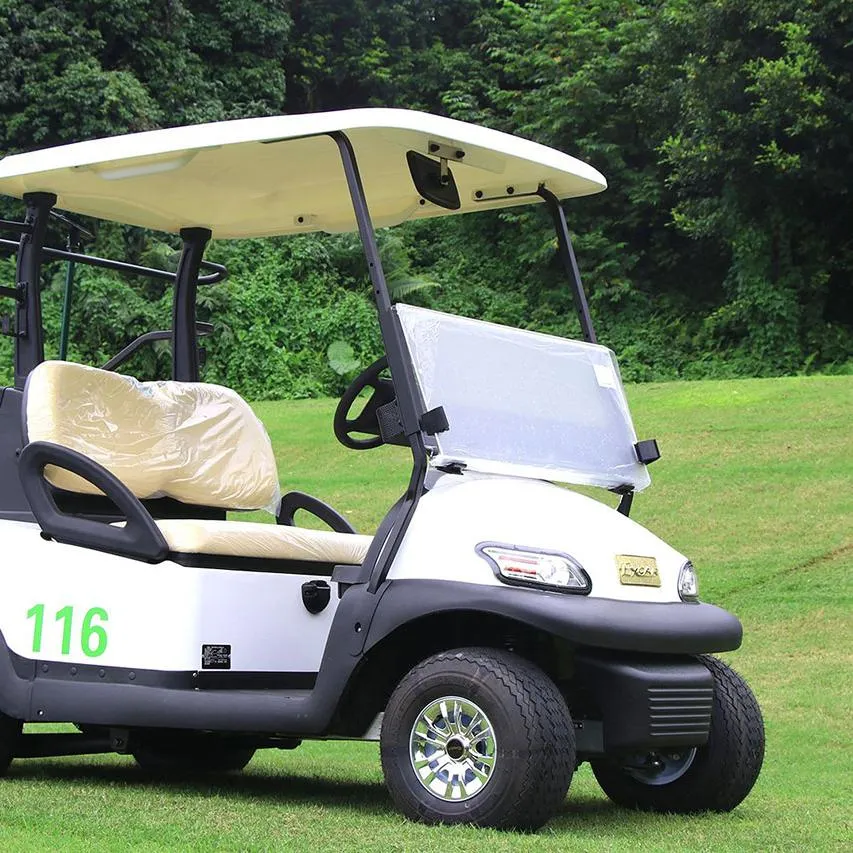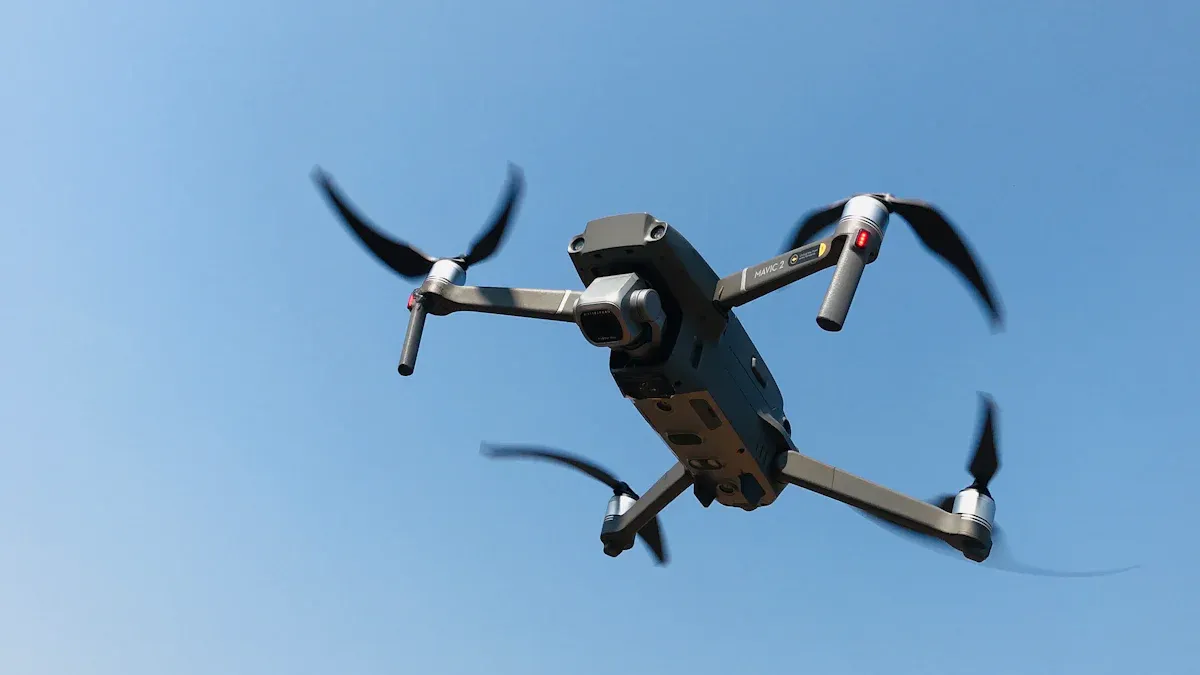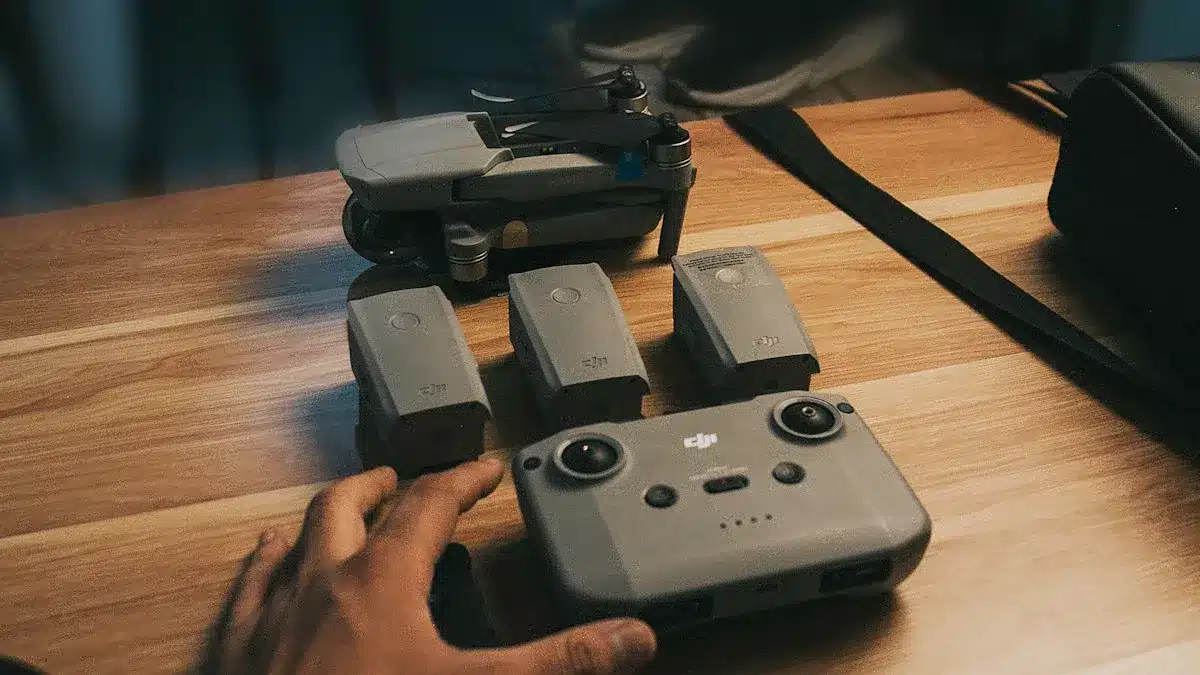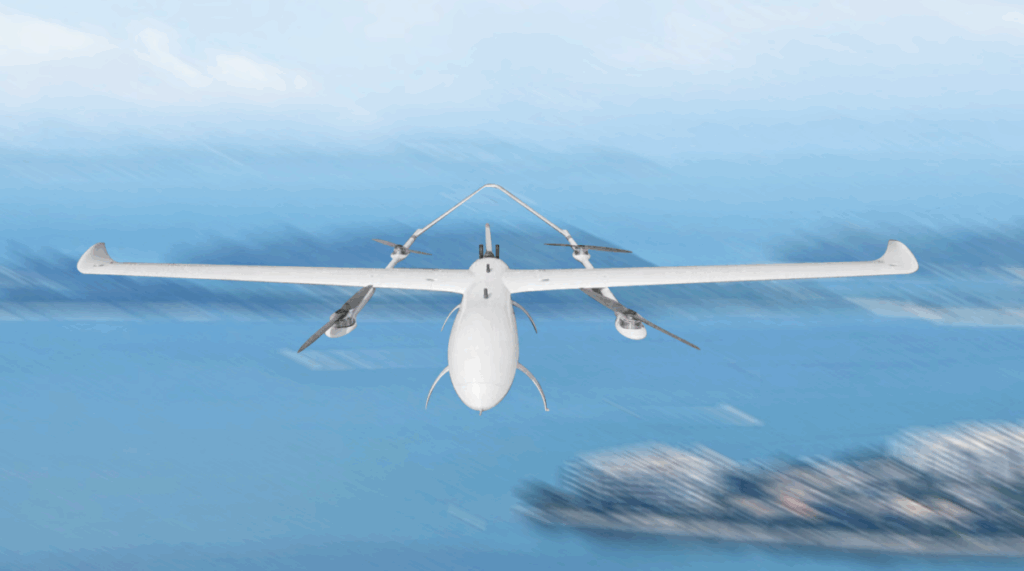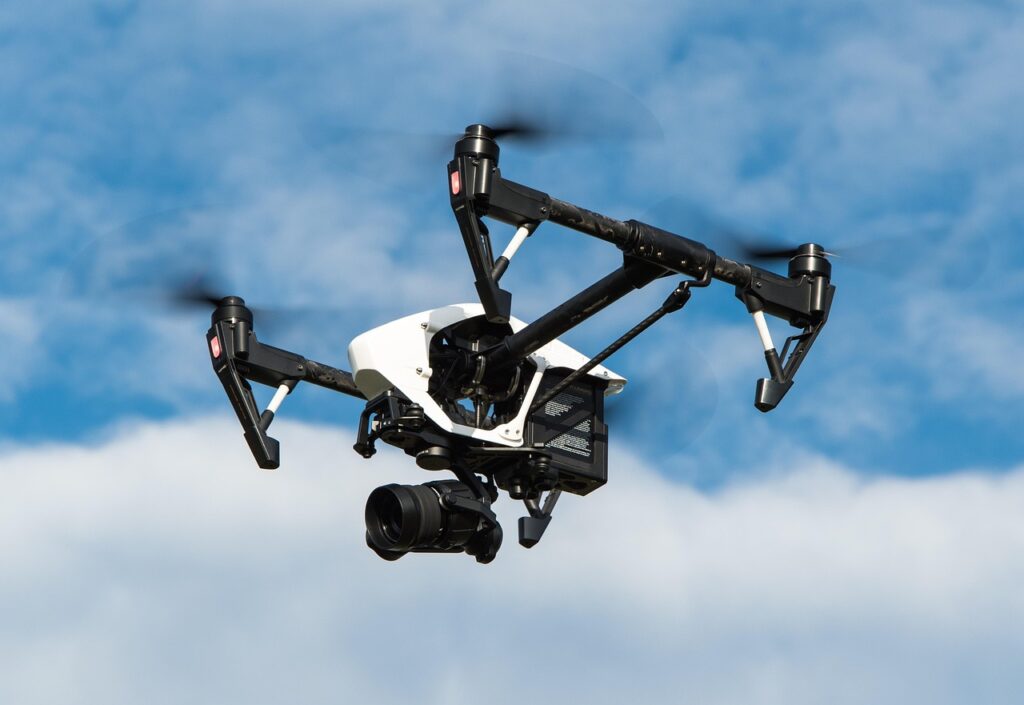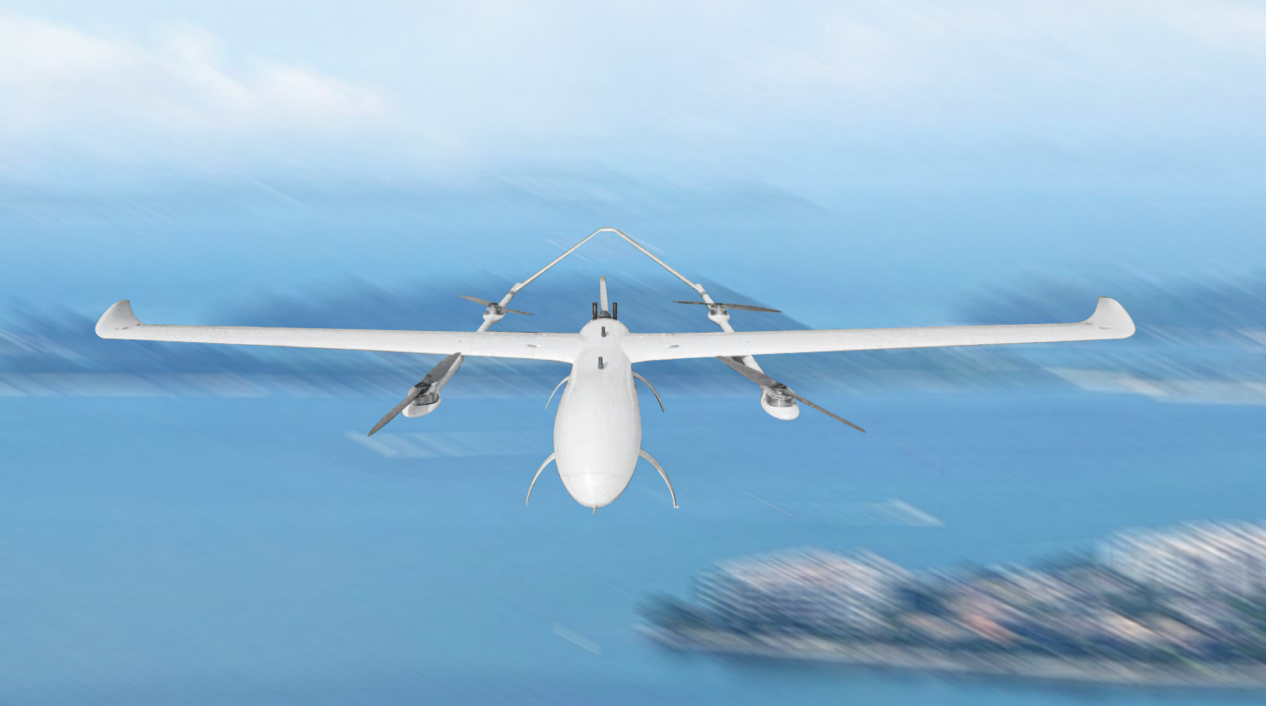
Battery choice plays a crucial role in determining drone performance, influencing flight range, speed, and energy efficiency. For instance, drones carrying heavy payloads tend to have shorter flight distances and reduced speeds, with their batteries typically operating at around 41% efficiency. This highlights how selecting the right battery, such as a LiPo battery, can significantly enhance drone functionality.
Two popular options are soft pack batteries, like LiPo batteries, and cylindrical batteries. Each comes with its own set of advantages. If you’re passionate about drones or work with them, you might be curious about which battery suits your needs best. Herewin is here to guide you through this comparison to help you make an informed decision.
Wichtigste Erkenntnisse
-
Soft pack batteries, like LiPo, are light and give quick energy. This makes them great for drones that need speed and quick moves.
-
Cylindrical batteries are stronger and safer because of their tough design. However, they are heavier and might not give enough power for advanced drones.
-
Picking the right battery is very important for drone performance. Soft pack batteries help drones fly farther and work better. Cylindrical batteries cost less but are not as good for drones needing high power.
-
For fun or work drones, soft pack batteries perform better. Cylindrical batteries work well for simpler uses.
-
New semi-solid state batteries may make drones safer and more efficient. This could change how drone batteries work in the future.
Understanding Soft Pack Batteries
Features of Soft Pack Batteries
Soft-pack batteries, also called LiPo batteries, use lithium polymer. They have a pouch-like shape, making them light and small. Unlike cylindrical batteries, they don’t have hard casings. This allows them to be shaped in different ways. These batteries come in many sizes to fit different drones.
Soft-pack batteries are safe and handle heat well. They transfer energy efficiently, which is important for drones needing high power during flight.
Advantages of Soft Pack Batteries
Soft-pack batteries are great for drones because they are lightweight. This helps drones fly better and move faster. LiPo batteries give strong power bursts for takeoff and quick moves.
LiPo cells make these batteries safer and last longer. They don’t overheat and work well even with high power use. Soft-pack batteries can also be customized to fit your drone’s needs.
Herewin’s LiPo batteries are known for being reliable and powerful. They are light and provide strong energy, perfect for drones.
Disadvantages of Soft Pack Batteries
Soft-pack batteries don’t have hard covers, so they can get damaged easily. You must handle them carefully to avoid breaking them. They also need proper voltage control since they lack built-in systems like some cylindrical batteries.
Even with these issues, technology makes soft-pack batteries safer and stronger. New improvements, like semi-solid-state batteries, make Herewin’s LiPo batteries even more dependable for drones.
Exploring Cylindrical Batteries
Features of Cylindrical Batteries
Cylindrical batteries are used in many industries because of their design. They have a strong, tube-like shape that makes them tough. Their standard sizes and shapes make them easy to produce and use in devices. Many cylindrical batteries use lifepo4 technology, which makes them safer and more efficient.
These batteries can store a lot of energy in a small space. This makes them great for devices needing long-lasting power. Sometimes, lifepo4 prismatic cells are added to improve heat control and battery life.
Advantages of Cylindrical Batteries
Cylindrical batteries have many benefits that make them useful:
-
They store energy well, which is important for drones and other devices.
-
Their strong design makes them safe and durable, even in tough conditions.
-
These batteries are trusted in many industries because they work well.
Lifepo4 pouch and prismatic cells make cylindrical batteries even safer and last longer. This makes them a good choice for many users.
Disadvantages of Cylindrical Batteries
Cylindrical batteries also have some downsides that may not suit drones:
-
They come in fixed sizes, which might not fit special drone designs.
-
Regular batteries may not handle the high power needs of advanced drones. This can cause overheating or shorter battery life.
-
Some batteries lack safety features and may not meet rules for professional use.
These issues show why Lipo battery are better for drones. They offer more flexibility and better performance.
Side-by-Side Comparison of Soft Pack and Cylindrical Batteries
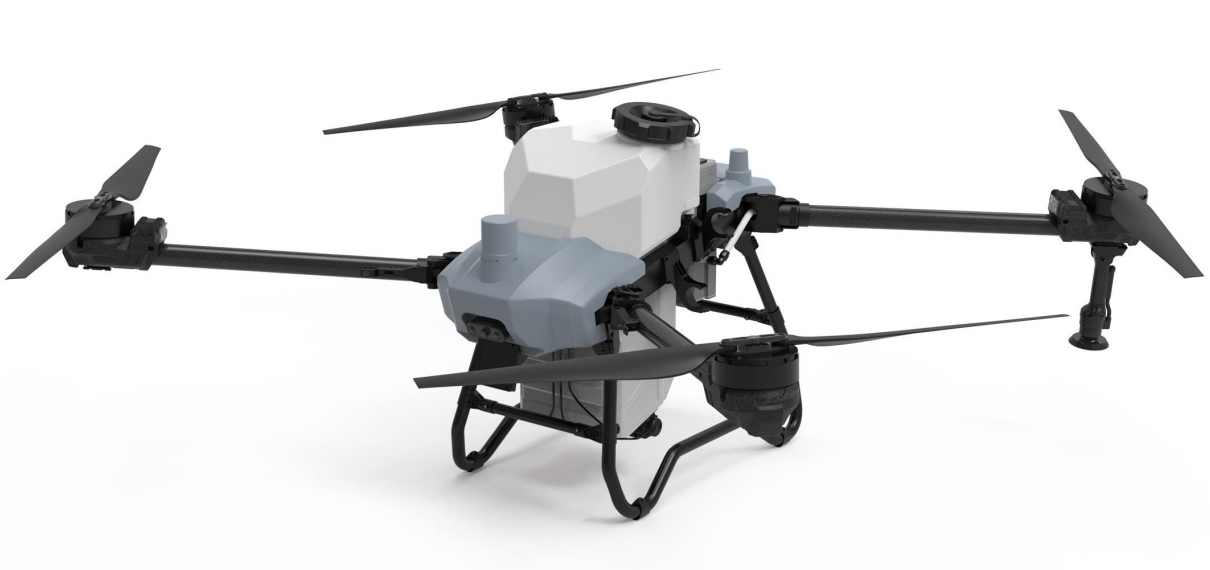
Weight and Portability
Weight is very important for how well drones fly. Soft-pack batteries are lighter because they don’t have heavy covers. Their pouch shape makes them great for drones needing long flights. These batteries fit easily into small drones without losing power.
Cylindrical batteries are heavier because of their strong outer shells. This makes them tough but harder to use in light drones. The extra weight can lower flight performance and make drones harder to control.
If you need lightweight and portable batteries, soft-pack ones are better.
Energy Density and Power Output
Energy storage and power delivery are key for drone batteries. Cylindrical batteries can store more energy, lasting longer in some devices. But drones need batteries that give quick power for takeoff and fast moves.
Soft-pack batteries, are great for this. They provide strong power bursts without overheating. Cylindrical batteries often struggle to deliver quick energy. Soft-pack batteries work well even when drones need a lot of power.
For drones needing both energy and quick power, soft-pack batteries are ideal.
Durability and Safety
Drone batteries must be safe and last a long time. Cylindrical batteries are safer with strong covers and safety systems. They last longer and lose less charge over time.
Soft-pack batteries are lighter but need careful handling to avoid damage. Without hard covers, they can break more easily, raising safety concerns. New technology have made them safer and stronger. These cells handle heat well and perform reliably under high power use.
Cylindrical batteries are tougher, but soft-pack batteries still are improving. They are becoming safer and better for drones than Cylindrical batteries.
Cost and Affordability
When picking a battery for your drone, cost is important. You need a battery that works well and fits your budget. Both soft pack batteries and cylindrical batteries have different price factors to think about.
Soft pack batteries, like LiPo batteries, usually cost more. They are light and give strong power, which is great for drones. But these features make them pricier. Making soft pack batteries is harder and costs more. Still, their great performance in drones often makes the price worth it. If you want better flight and power, spending more on a soft pack battery can be a good choice.
Cylindrical batteries are cheaper. Their simple design allows for easy mass production, lowering costs. If you want to save money, cylindrical batteries might seem like a good option. But they are heavier and store less power, which isn’t ideal for drones. While they cost less upfront, you might need more of them to match the performance of soft pack batteries. This could end up costing more over time.
Here’s a quick comparison to guide you:
|
Merkmal |
Soft Pack Batteries |
Cylindrical Batteries |
|---|---|---|
|
Price |
Higher due to advanced design and materials |
Lower due to mass production |
|
Value for Drones |
Excellent for high performance |
Limited due to weight and power issues |
Tipp: If you care about drone performance, buying a good soft pack battery can save money later. You won’t need as many replacements or extra batteries.
In the end, your choice depends on your needs and budget. For racing or professional drones, soft pack batteries are worth the cost. For simpler uses, cylindrical batteries might work, but they’re not the best for drones.
Recommendations for Drone Applications
Recreational Drones
Recreational drones are fun for taking pictures or flying for fun. Picking the right battery makes flying better. Soft pack batteries, like LiPo batteries, are great for these drones. They are light and give strong power. This helps drones move quickly and stay steady in the air.
When choosing a battery for your recreational drone, think about these:
-
Flight Time: Longer flights are more enjoyable. Bigger batteries last longer.
-
Drone Size and Weight: Small drones need light batteries to fly better.
-
Environmental Factors: Wind and heat can affect batteries. Good motors and designs save energy.
|
Performance Factor |
Description |
|---|---|
|
Flight Time |
Longer flights are important for fun and work. |
|
Batteriekapazität |
Bigger batteries give more energy for longer use. |
|
Drone Size and Weight |
Light drones use less energy, making batteries last longer. |
|
Features to Extend Flight Time |
Good motors and designs help save energy and fly longer. |
LiPo batteries are safe and work well for fun drones. Handle them carefully to avoid damage or risks.
Professional Drones
Professional drones carry cameras or tools for jobs like photos or inspections. These drones need batteries that store lots of energy and give steady power. LiPo batteries are perfect because they are light and give strong power.
For professional drones, focus on:
-
Batteriekapazität: Bigger batteries let drones work longer without recharging.
-
Sicherheit: LiPo batteries are safer and don’t overheat.
-
Durability: Strong batteries last longer, even in tough conditions.
LiPo batteries are the best for professional drones. They store lots of energy and give steady power for hard tasks.
Racing Drones
Racing drones need batteries that give quick power for fast moves. LiPo batteries are the best choice because they are light and give strong bursts of energy. This helps racing drones go fast and turn sharply.
When picking a battery for your racing drone, check these:
|
Metric |
Description |
|---|---|
|
Voltage (Cell Count) |
Matches the drone’s motors, usually 4S or 6S. |
|
Capacity (mAh) |
|
|
Discharge Rate (C) |
Shows how fast the battery gives power; needed for speed. |
|
Size and Weight |
Must fit the drone and not be too heavy. |
|
Batteriechemie |
LiPo batteries are best for energy but need careful use. |
LiPo batteries with high discharge rates make racing drones perform well. They give power for fast starts and sharp turns. Always check if the battery fits your drone to avoid problems.
Note: Racing drones use batteries a lot. Check them often for damage to stay safe and keep them working well.
Industrial and Delivery Drones
Industrial and delivery drones are important in many industries today. They do jobs like delivering packages, farming tasks, and checking buildings. To do these tough jobs well, they need batteries that last long, work reliably, and charge quickly.
Why Battery Choice Matters for Industrial and Delivery Drones
Good batteries are key for industrial and delivery drones to work well. They need to fly long distances and keep steady power. For example, delivery drones must travel far to drop off packages. Farming drones need to cover big fields for spraying or checking crops. A strong battery helps drones work without stopping and boosts efficiency.
Soft pack batteries, like LiPo batteries, are great for these drones. They are light, so drones can carry more or fly farther. These batteries also give strong energy, which is needed for hard tasks. Cylindrical batteries are heavier and less useful for these jobs. They can’t handle high energy needs, making them less ideal for industrial drones.
|
Performance Metric |
LiPo Soft Pack Battery |
Cylindrical Battery |
|---|---|---|
|
Energy Density |
Achieves 320 Wh/kg with semi-solid-state electrolyte technology, 25%-30% higher than cylindrical batteries, enabling longer flight times |
Typical energy density of 200-250 Wh/kg due to rigid metal casing and winding structure limitations |
|
Weight & Space Efficiency |
Aluminum-plastic film reduces weight by 20–40% and allows customizable shapes for optimal structural integration |
Heavy metal casing and poor space utilization (central cavity waste), reducing energy density by 5–10% when grouped
|
|
Capacity & Scalability |
Supports high-capacity cells (90 Ah) and flexible series-parallel configurations (2–24S) for high-power demands |
Limited single-cell capacity (≤40 Ah), requiring complex multi-cell setups for large-scale applications |
|
Discharge Rate & Resistance |
Laminated stacking lowers internal resistance (10–15%) and enables 45C continuous discharge (90C pulse) for heavy-duty tasks |
High internal resistance due to single-tab winding, typically limited to ≤30C discharge with voltage sag |
|
Sicherheit |
Semi-solid electrolyte minimizes leakage; pouch design prevents explosions (only swells under thermal stress) |
Metal casing increases explosion risks under extreme conditions |
|
Technological Innovation |
Continuous upgrades in stacking and semi-solid tech target 400 Wh/kg and 10-minute fast charging (80% capacity) |
Slow innovation due to mechanical constraints (e.g., thermal management in 4680 cells) |
Die wichtigsten Vorteile
-
Lightweight & High Energy Density: Customizable pouch design and semi-solid tech reduce drone weight while maximizing flight time.
-
Scalability & Flexibility: Single cells up to 90 Ah and 24S configurations support industrial drones’ high-voltage demands
-
High Power Efficiency: Low internal resistance enables stable power delivery under heavy loads
-
Safety & Durability: Pouch structure and semi-solid electrolytes enhance reliability in extreme conditions
Key Features to Look for in Batteries for Industrial and Delivery Drones
When picking a battery for your drone, think about these:
-
Flight Time: Longer flights mean fewer stops to recharge. This is helpful for delivery drones making many stops.
-
Power Output: Strong power helps drones lift heavy loads or fly in wind.
-
Durability: Industrial drones face tough conditions. A strong battery lasts longer and works well in heat or cold.
-
Recharging Speed: Fast charging gets drones back to work quickly. This is important for busy industries.
Real-World Applications of High-Performance Batteries
The need for better batteries in industrial and delivery drones is growing fast. Delivery companies use drones for quick package drop-offs. These drones need batteries that last long and charge fast to meet tight schedules. In farming, drones with good batteries can spray or check large fields without stopping. As more industries use drones, picking the right battery becomes even more important.
Soft pack batteries are the best choice for these drones. They give the power, dependability, and flexibility needed for tough jobs.LiPo batteries are advancing through precision stacking and solid-state electrolyte integration, while cylindrical batteries face stagnation due to structural limitations. For industrial drones, LiPo offers unmatched safety, endurance, and cost efficiency.
Why Herewin Soft Pack Batteries Are Special
Great Performance for Drones
Herewin soft pack batteries work really well for drones. They give quick power boosts for takeoff and fast moves. Their smart design keeps power steady, even in tough situations. This makes them perfect for racing, photography, or work drones.
Unlike older batteries, Herewin ones stay strong while being used. This means your drone works its best, whether taking cool pictures or delivering items. With Herewin, your drone is ready to perform every time.
Light and Full of Energy
Weight is super important for drones to fly well. Herewin soft pack batteries are light, so your drone carries less weight. This helps it fly longer and move better. Even though they’re light, these batteries hold a lot of energy.
High energy storage means they give lots of power in a small size. This helps drones do hard jobs like speeding up fast or carrying heavy things. Picking Herewin gives you light batteries with strong power, making your drone better.
Reliable and High Quality
Good quality and trust are key for drone batteries. Herewin soft pack batteries are tested carefully to meet top standards. This testing makes sure they work well every time.
Herewin uses advanced technology and strong materials to make their batteries last. They stay good through many charges. Whether you fly drones for fun or work, Herewin batteries are dependable and powerful.
The next step of Herewin——Semi-solid state battery
The future of drone batteries is in semi-solid state technology. Herewin is leading the way by making batteries that are safer, stronger, and last longer. These new batteries solve problems with older lithium-ion and lithium-polymer batteries. They bring exciting changes for drone fans and professionals.
Semi-solid state batteries use special materials to store energy better and give more power. For example, Herewin makes the batteries safer and work better, which is great for drones. These batteries also last a long time. They keep 72.2% of their power after 80 uses, even in hot conditions. This means they work well for tough drone tasks.
|
Merkmal |
Nutzen Sie |
|---|---|
|
High cycling stability |
Keeps batteries working well in hard conditions. |
|
Confined dissolution strategy |
Helps batteries last longer for more drone use. |
Herewin designs these batteries to work well at normal temperatures. This makes them useful for daily drone flying. The confined dissolution strategy also helps them last longer. Right now, the capacity is 320 mah, but new improvements aim to make them store even more energy.
Tip: Semi-solid state batteries are not only safer but also more powerful. They give strong energy without getting too hot, perfect for drones needing quick power boosts.
By creating semi-solid state technology, Herewin is changing drone batteries. These new batteries will make your drone flights safer, longer, and stronger. With Herewin, your drone can reach its full potential.
Picking the right battery is key for drones to work well. Soft pack batteries, like LiPo batteries, have big benefits over cylindrical ones. They are lighter, thinner, and fit many drone designs easily. Their flat shape helps spread heat better, making them safer for powerful drones.
|
Merkmal |
Soft Pack (Pouch Cells) |
Cylindrical Batteries |
|---|---|---|
|
Yes (as thin as 4mm) |
No (thicker design) |
|
|
Lightweight Build |
Yes (soft pouches) |
No (hard metal cases) |
|
Flexible Shapes |
Yes (custom sizes) |
No (fixed shapes) |
|
Good Heat Control |
Yes (wide surface area) |
No (small surface area) |
For drones, soft pack batteries give more power and work better. Herewin’s LiPo battery is light and works reliably. Whether flying for fun or work, Herewin helps your drone perform its best.
FAQ
1. What makes soft pack batteries better for drones than cylindrical batteries?
Soft pack batteries are lighter and give quick energy bursts. This makes them great for drones needing speed and agility. Cylindrical batteries are heavier and can’t deliver fast energy, limiting their use in drones.
2. Are cylindrical batteries safe for drones?
Cylindrical batteries have strong shells but can overheat with high use. This raises the chance of dangerous heat problems. Soft pack batteries, like Herewin’s LiPo ones, handle heat better and are safer for drones.
3. Can soft pack batteries last as long as cylindrical batteries?
Soft pack batteries may wear out sooner, but new technology improves them. Herewin’s batteries last longer and give strong power for many uses.
4. Why are cylindrical batteries cheaper than soft pack batteries?
Cylindrical batteries are simple to make, so they cost less. Soft pack batteries need special materials and methods, making them pricier. But their better performance makes them worth it for drone users.
5. What is the future of drone batteries?
Semi-solid state batteries are the future. They are safer, last longer, and store more energy. Herewin is leading this change, helping drones perform better with advanced batteries.
Siehe auch
Selecting The Right Manufacturer For Drone Batteries


